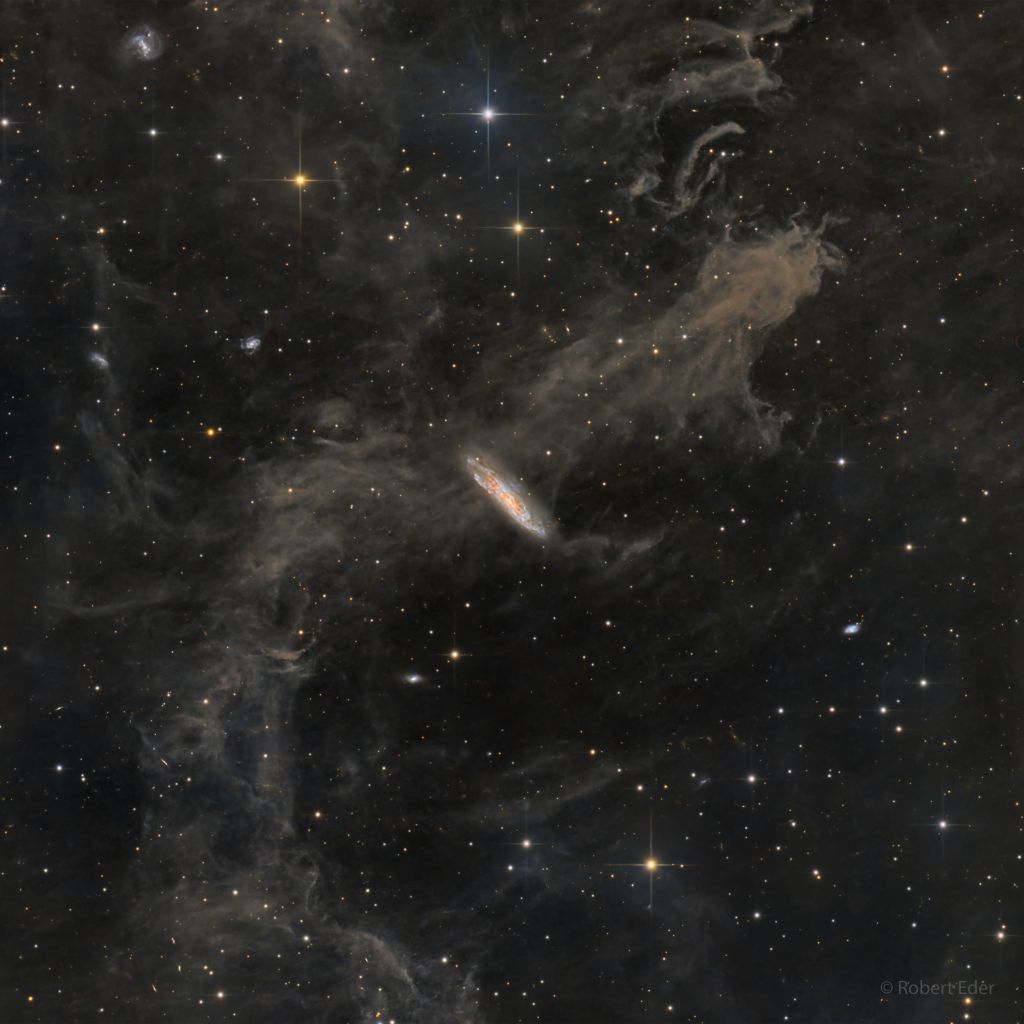Galaxies, Stars, and Dust
Image Credit &
Copyright:
Robert Eder
This well-composed telescopic field of view covers over a Full Moon on the
sky toward the high-flying constellation Pegasus.
Of course the brighter stars show
diffraction spikes, the commonly
seen effect of internal
supports
in reflecting telescopes, and lie well within our own
Milky Way galaxy.
The faint but pervasive clouds of interstellar dust
ride above the galactic plane
and dimly reflect the Milky Way's starlight.
Known as galactic cirrus or integrated flux nebulae they are
associated with the Milky Way's molecular clouds.
In fact, the diffuse cloud cataloged as
MBM 54,
less than a thousand light-years distant, fills the scene.
The galaxy seemingly tangled
in the dusty cloud is the striking spiral galaxy NGC 7497.
It's some 60 million light-years away, though.
Seen almost edge-on near the center of the field,
NGC 7497's own spiral arms and dust lanes echo
the colors of stars and dust
in our own Milky Way.





